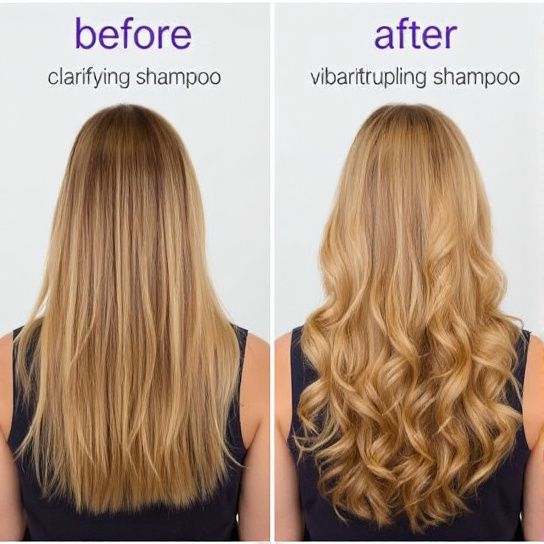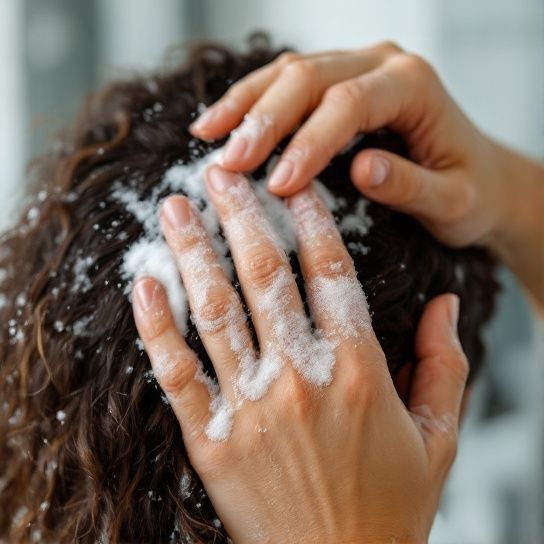
Hey there, hair-care explorers! So, let’s have a cozy little chat about something a lot of us might be curious about, yet maybe a bit hesitant to dabble with: **clarifying shampoos.** You know, those magical potions often tucked away behind our usual go-to products. Just picture this: it’s been weeks since your last haircut (or maybe months—no judgment here), you’ve been styling your hair with all sorts of lotions and potions, and now your locks just feel…bleh. Lackluster, if you will. Well, clarifying shampoos might just be your new secret weapon.
What Exactly Is Clarifying Shampoo?
Now, if you’re wondering what the heck sets a clarifying shampoo apart from regular shampoos, you’re not alone. It’s a query many have. Clarifying shampoos are specially formulated to offer a much deeper clean than your standard suds. They’re like the vacuum cleaners of the hair world, aiming to lift away all that heavy buildup from styling products, environmental pollution, and even the occasional over-oiliness.
**Remove Build-Up:** That’s their main gig—cleansing your hair and scalp of all those residues that make your hair dull, limp, or even stubbornly greasy. Sounds enticing, right?
Why Use Clarifying Shampoo?
If you’ve ever exclaimed in exasperation that your hair “just won’t,” it might be in need of a thorough, clarifying cleanse. Over time, your scalp jitters around under layers of product, sweat, natural oils, and let’s not forget the occasional dry shampoo shortcut. Here’s where clarifying shampoos leap into action. Trust me on this one; a substantial cleanse usually brings your hair back to being its most glorious self.
Key Signs You Need a Clarifying Shampoo
- Flatness and Lack of Volume: When your once bouncy curls turn into lifeless noodles.
- Greasy Strands: Your hair feels heavy or greasy soon after washing.
- Dandruff and Itchy Scalp: Persistent flakes or itching can indicate a scalp congested with buildup.
- Color-Treated Hair Fading Prematurely: Bright shades may dull if covered in product residues.
Guidance on When to Use Clarifying Shampoos

Timing, my friend, is vital! But how often should one use such an intense treatment? Here’s where the richness of our conversation deepens. Here’s a step-by-step process to keep you sorted without overdoing it.
Step 1: Assess Your Hair’s Needs
Depending on whether you style your mane with lots of products daily, how often you swim, or even how long it’s been since you last switched up your daily routine, consider the frequency wisely.
- Product Junkie: Use it once a week if you regularly apply hair sprays, mousses, or serums.
- Casual Stylist: Every other week if you go easy on the gunk.
- Chlorine Contact: Got a pool habit? Once weekly should suffice.
- Au Naturel: You can dial it back even further if you seldom touch stylers or heated tools—think once a month.
Step 2: Pre-Clarification Preparation
Preserve your plughole and make sure you’ve scheduled some post-wash pampering. Hot tip: try a moisturizing mask after a clarifying session. It does wonders!
- Detangle Hair: Comb through your hair gently before you wash. This minimizes breakage during your washing ritual.
- Wet Hair Thoroughly: If there’s one step in the recipient of forgetfulness, it’s often getting your hair sufficiently wet. Let the water work its magic opening your hair cuticles.
Step 3: The Cleansing Process
Surprisingly, there’s an art to applying clarifying shampoo. Here’s how you can ace it every time:
- Use the Right Amount: A dollop the size of a coin does the job—don’t go overboard.
- Focus on the Scalp: Work it into your scalp with your fingertips, and let the lather trickle down your hair naturally as you rinse.
- Rinsing is Key: Make sure all remnants are thoroughly washed away. No rinse shortcuts!
Step 4: Nourish and Moisturize

After a productive trip with clarifying shampoo, your hair might feel a little too squeaky clean. So, here’s where you lavish the moisture back.
- Conditioner or Moisturizing Mask: Slather on a rich, restorative conditioner or hair mask. It’s like a drink for dry hair—your locks will love you for it.
- Leave-In Treatments: If your hair tends towards the dry side, consider a leave-in conditioner for added softness and hydration.
When NOT to Use Clarifying Shampoo
As we swirl through our knowledge pool, let’s remember that these potent potions aren’t meant for everyday use. There are times it’ll be counterproductive.
- Post-Coloring: If you’ve just colored your hair, especially if it’s a vibrant tone, steer clear of clarifiers. They can dull your new shade.
- Everyday Use: Since they strip away oils, using them too frequently can lead to dryness or scalp irritation—no thank you to that.
- Pre-Oiling Hair Treatments: We often care for our strands with oils, and clarifying shampoos can strip these nourishing touches. Instead, try using a mild shampoo post-oiling or skip washing out oil treatments with a clarifier.
Common Mistakes with Clarifying Shampoo Use
A quick run-through of what often goes amiss in the land of clarification.
Misstep 1: Using too Much Product
With clarifying shampoos, less is more. Too much shampoo means stripping too many oils away—ones you actually need.

Misstep 2: Skipping Conditioner
Forgetfulness creeps in easily, but remember: clarifying washing should always be followed by serious moisturizing. Make conditioner your bestie here.
Misstep 3: Ignoring Scalp Condition
Assess the state of your scalp. If it’s persistently dry or sensitive, opt for hydrating alternatives or consult with a professional before incorporating clarifiers.
A Hair Care Table to Guide Clarifying Shampoo Use
| Hair Type | Frequency of Use | Recommended Moisturizer Follow-up |
|---|---|---|
| Curly and Coiled | Every 4-6 weeks | Deep-conditioning mask |
| Fine and Oily | Once a week | Lightweight conditioner |
| Thick and Straight | Every 2 weeks | Balancing conditioner |
| Chemically Treated | Once a month | Protein-based conditioner or mask |
Wrapping It All Up
So, that’s the run-down on clarifying shampoos! They’re like little hair-care powerhouses ready to rejuvenate those tired, product-caked tresses. Remember to listen to your hair—and scalp—and consult a stylist if you’re ever uncertain.
Clarifying shampoos can indeed save a bad hair day from turning bust. With just the right balance of care and moisture, a fresh start for your hair awaits with every clarifying endeavor. Now, give this a try if you’re feeling the need for a reset. Trust me, every strand will thank you graciously, practically applauding in the mirror.
Got any wild tales with clarifying shampoos or tricks that work wonders? Share them with the crew! After all, we’re all here to find the balance between hair flair and care. Now, go out there and show off that revitalized bounce! Happy cleansing!
Frequently Asked Questions
What is clarifying shampoo and what does it do?
Clarifying shampoo is a deep-cleansing hair product designed to remove stubborn buildup from styling products, minerals in hard water, and environmental pollutants. It acts as a “hair detox,” freeing your hair from residue that can dull shine and weigh it down, restoring natural shine, softness, and volume[1][2][3).
How often should I use clarifying shampoo?
Clarifying shampoo should not be used daily. It is recommended to use it once or twice a week, or every one to four times a month, depending on your hair type and needs. Overuse can strip the hair of its natural oils, leading to dryness[4][5][1).
How do I use clarifying shampoo effectively?
To use clarifying shampoo effectively, start by wetting your hair with warm water. Apply a generous amount of shampoo to your scalp, focusing on areas prone to buildup. Massage the shampoo into your scalp, let it sit for a minute or two, and then rinse thoroughly. Follow up with a moisturizing conditioner to replenish lost moisture[1][3][4).
Can clarifying shampoo help with dandruff and itching?
Clarifying shampoo can help alleviate dandruff and itching by removing excess oil and product buildup from the scalp. However, it is not specifically formulated to treat conditions like seborrheic dermatitis or psoriasis. For persistent issues, it is advisable to consult a dermatologist[1][4][3).
References- GK Hair: How to Use Clarifying Shampoo Correctly for Healthy Hair.
- L’Oreal Paris: Clarifying Shampoo: What Is It and Do You Need One?.
- GK Hair: Clarifying Shampoo 101 | Everything You Need to Know.
- Nexxus: What To Expect & Benefits Of Clarifying Shampoo.
- Seven Haircare: How Often Should I Use Clarifying Shampoo?.



Leave a Reply